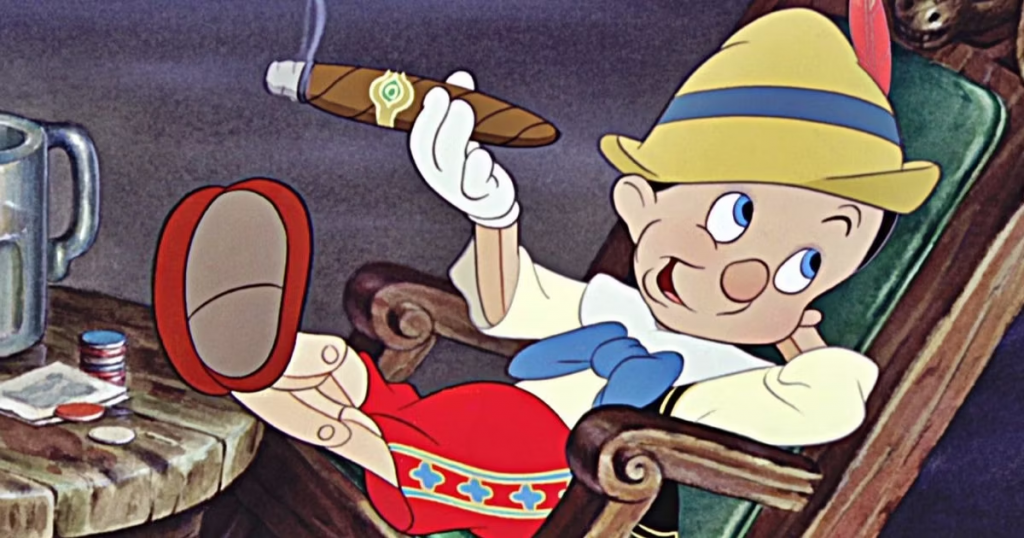
- Pleasure Island in Pinocchio (1940): In the beloved classic “Pinocchio,” Pleasure Island initially appears as a paradise for mischievous boys. However, as the story unfolds, it takes a dark turn, with the boys turning into donkeys as punishment for their bad behavior. This abrupt and grim transformation can be unsettling for modern audiences, highlighting how storytelling norms have evolved.
- The Crows in Dumbo (1941): The depiction of the crows in “Dumbo” has been criticized for perpetuating racial stereotypes. These characters, who help Dumbo learn to fly, have raised concerns over their portrayal and the use of offensive stereotypes in a family-friendly film.
- Siamese Cats in Lady and the Tramp (1955): The Siamese cat characters in “Lady and the Tramp” are presented with exaggerated Asian accents, reinforcing racial stereotypes that are inappropriate by today’s standards.
- Song of the Roustabouts in Dumbo (1941): The song “Song of the Roustabouts” in “Dumbo” features lyrics and imagery that reflect a derogatory view of African American laborers, perpetuating offensive stereotypes.
- Peter Pan’s Native American Stereotypes (1953): “Peter Pan” contains scenes and characters that depict Native Americans in a stereotypical and offensive manner, reinforcing harmful biases.
- The Aristocats’ Asian Stereotype (1970): In “The Aristocats,” the character Shun Gon, a Siamese cat, is voiced with an accent and displays stereotypes that are widely seen as culturally insensitive.
- The Sunflower Character in Fantasia (1940): In “Fantasia,” a character named Sunflower, who is a dark-skinned centaurette, has been criticized for reinforcing racial stereotypes and perpetuating offensive imagery.
- Jim Crow Laws Reference in Dumbo (1941): The use of the term “Jim Crow” in “Dumbo” as the name of a group of crows has been seen as an unfortunate reference to the segregation laws of the time, which is not suitable for a children’s movie.
- Gender Stereotypes in Cinderella (1950): “Cinderella” features traditional gender roles and stereotypes, with the heroine’s ultimate goal being to find a prince to rescue her. Such portrayals have been criticized for reinforcing outdated notions of gender roles.
- Lack of Diversity in Early Disney Films: Classic Disney movies often lack racial and cultural diversity in their characters and settings. This lack of representation has been a point of criticism, as it doesn’t reflect the multicultural world we live in today.
While these moments may have been acceptable or even unnoticed in their respective eras, they are now viewed through a more critical lens, highlighting the need for ongoing conversations about representation, stereotypes, and cultural sensitivity in media.
We bring out some of the most well-known Disney collection, all of which are available at reasonable costs. Visit our link now if you are interested in the Disney collection


Perdita, Cruella de Vil, Roger Radcliffe, Dodger, Oliver
